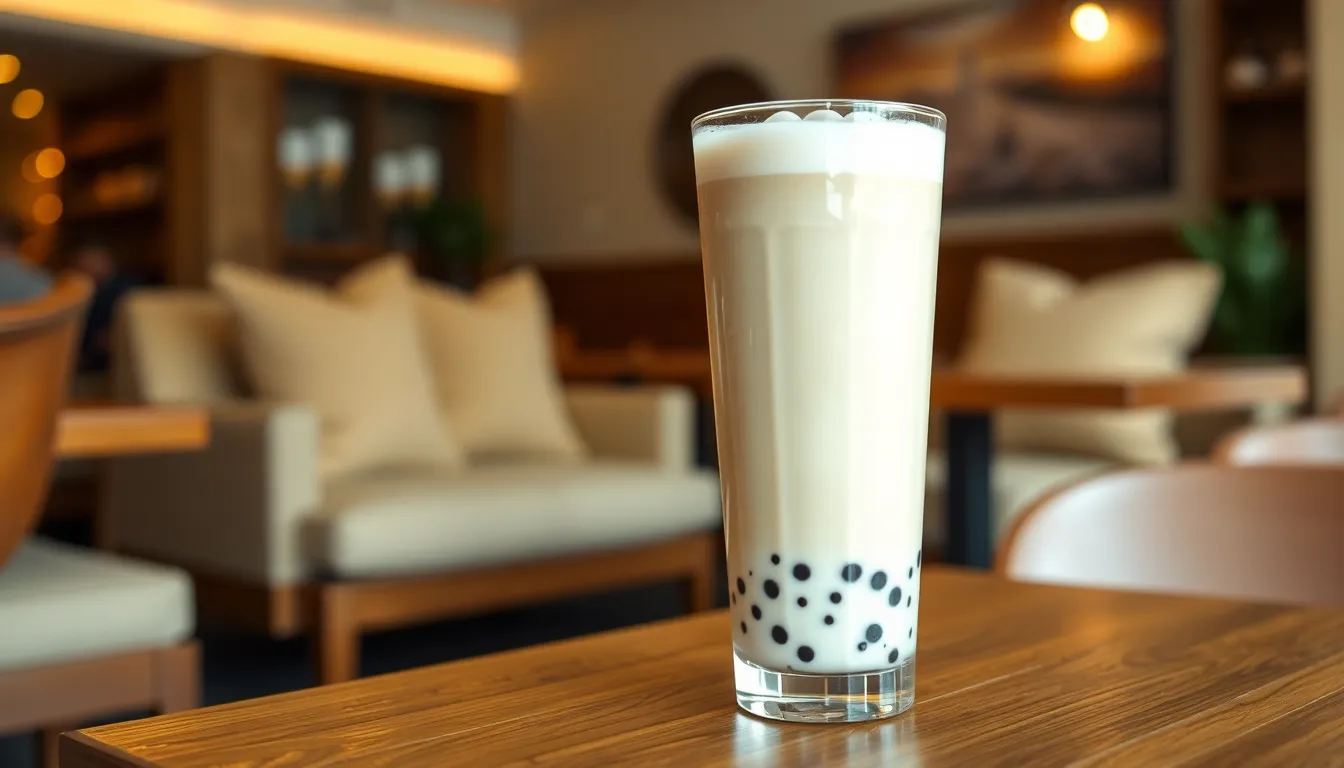Wondering what does milk tea taste like? This delightful beverage has captured the hearts of millions worldwide with its unique flavor profile that combines the robust character of tea with the creamy sweetness of milk.
If you’ve never tried milk tea before, you’re in for a treat. Depending on the variety, milk tea typically offers a smooth, silky texture with a balanced taste that’s neither too sweet nor too bitter. The tea base provides earthy, floral, or malty notes, while the milk component adds richness and mellows any astringency. Whether you’re curious about traditional Hong Kong-style milk tea or trendy bubble tea varieties, understanding the flavors will help you choose your perfect cup.
What Is Milk Tea? Understanding the Basics
Milk tea combines brewed tea with milk, creating a beverage that’s both refreshing and creamy. This popular drink originated in Taiwan during the 1980s but has roots in various tea-drinking cultures worldwide. Traditional milk tea recipes use black tea as the base, though green, oolong, and other tea varieties are common alternatives depending on regional preferences.
The preparation method significantly impacts milk tea’s taste profile. Most recipes involve brewing tea leaves first, then adding milk and sweeteners afterward. Some cultures, like British tea drinkers, heat the milk before adding it to the tea, while others, like Taiwanese bubble tea shops, mix cold milk with strong tea concentrate. The ratio of tea to milk varies widely—Hong Kong-style milk tea contains approximately 70% tea and 30% milk, creating a stronger tea flavor, while Thai milk tea often uses equal parts for a creamier result.
Various milk options affect the final taste and texture of milk tea. Whole milk provides richness and creaminess, while non-dairy alternatives like almond, oat, or coconut milk introduce subtle nutty or plant-based flavors. Many bubble tea shops use non-dairy creamers or condensed milk to achieve maximum creaminess without overwhelming the tea’s natural flavors.
The sweetening component plays a crucial role in milk tea’s overall taste experience. Brown sugar, honey, or simple syrup complement different tea bases—honey pairs exceptionally well with green tea milk tea, while brown sugar creates caramel notes perfect for robust black tea varieties. In Taiwan, specialty shops offer “tiger sugar” milk tea featuring dramatic brown sugar streaks along the cup’s interior, adding visual appeal and intense sweetness.
The Flavor Profile of Classic Milk Tea
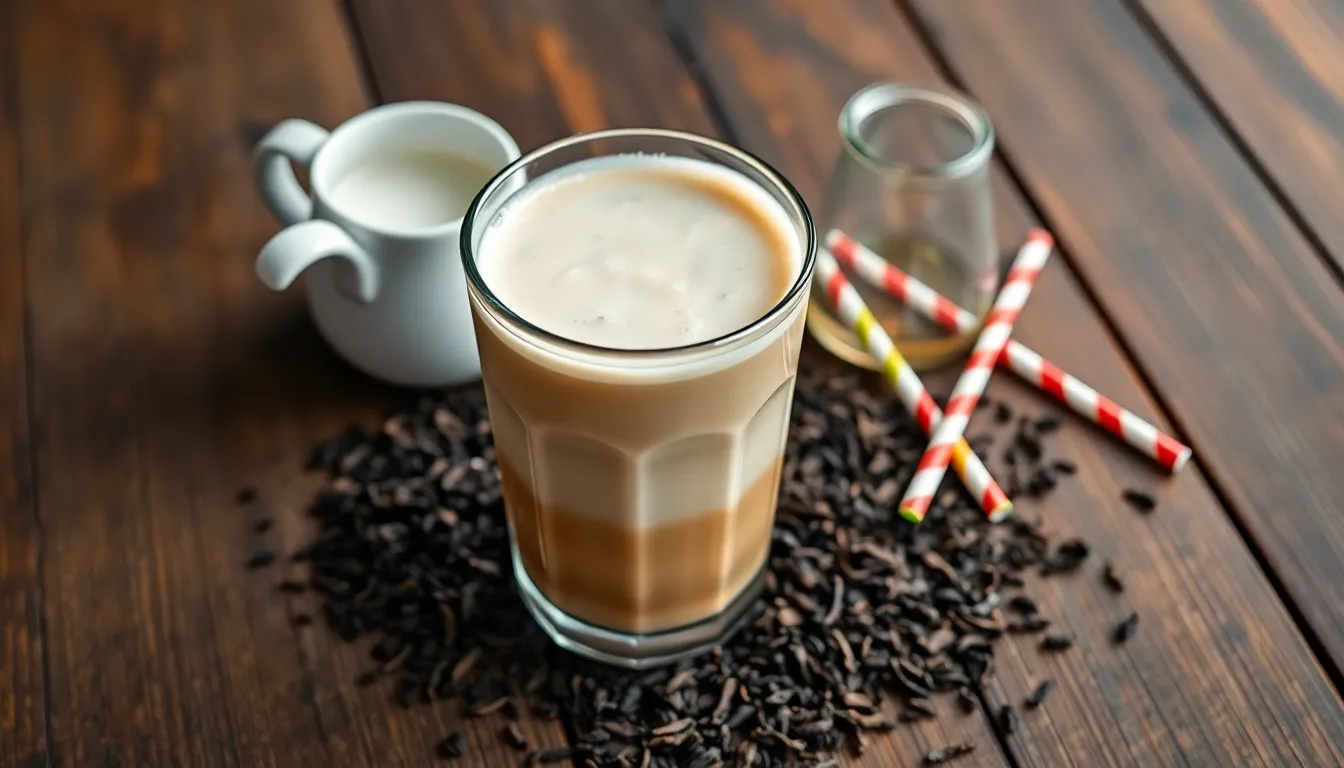
Classic milk tea offers a harmonious blend of earthy tea notes and creamy milk sweetness. The combination creates a smooth, indulgent beverage with complex flavor profiles that vary depending on the tea base and milk type used.
The Tea Base: Black, Green, or Oolong
Black Tea forms the foundation of most traditional milk tea varieties, contributing strong, full-bodied flavors with malty undertones. Earl Grey black tea adds citrusy or bergamot notes that balance beautifully with milk’s creaminess. The milk effectively mellows black tea’s natural astringency while preserving its robust character.
Green Tea milk beverages deliver a more delicate experience with grassy, slightly bitter notes. Adding milk softens green tea’s sharper edges while maintaining its subtle floral or vegetal qualities. The resulting taste remains lighter than black tea versions but with added richness from the dairy component.
Oolong Tea naturally possesses buttery, creamy characteristics even before adding milk. Milk Oolong varieties showcase this inherent creaminess, creating an exceptionally rich body. The dairy addition enhances oolong’s natural smoothness but can sometimes mask its more nuanced flavor notes, particularly in lighter oolong varieties.
The Dairy Element: How Milk Transforms Tea
Milk fundamentally alters tea’s flavor profile through binding agents that neutralize astringency and bitterness. These binding elements work to soften tea’s sharper notes while amplifying its more subtle flavors like citrus or floral undertones. The transformation isn’t just about taste—milk introduces a velvety texture that makes each sip feel more substantial and satisfying.
Different milk varieties create distinct flavor accents. Regular dairy milk adds classic creaminess, while half and half intensifies the richness. Coconut milk introduces tropical notes that complement certain tea bases exceptionally well. The milk fat content directly impacts the mouthfeel, with higher fat options creating a more luxurious drinking experience with caramel-like sweetness in some cases.
The perfect milk-to-tea ratio varies by preference, but the interaction between the tea’s natural characteristics and milk’s richness creates the signature smooth, comforting quality that makes milk tea beloved worldwide.
Different Varieties of Milk Tea and Their Flavors
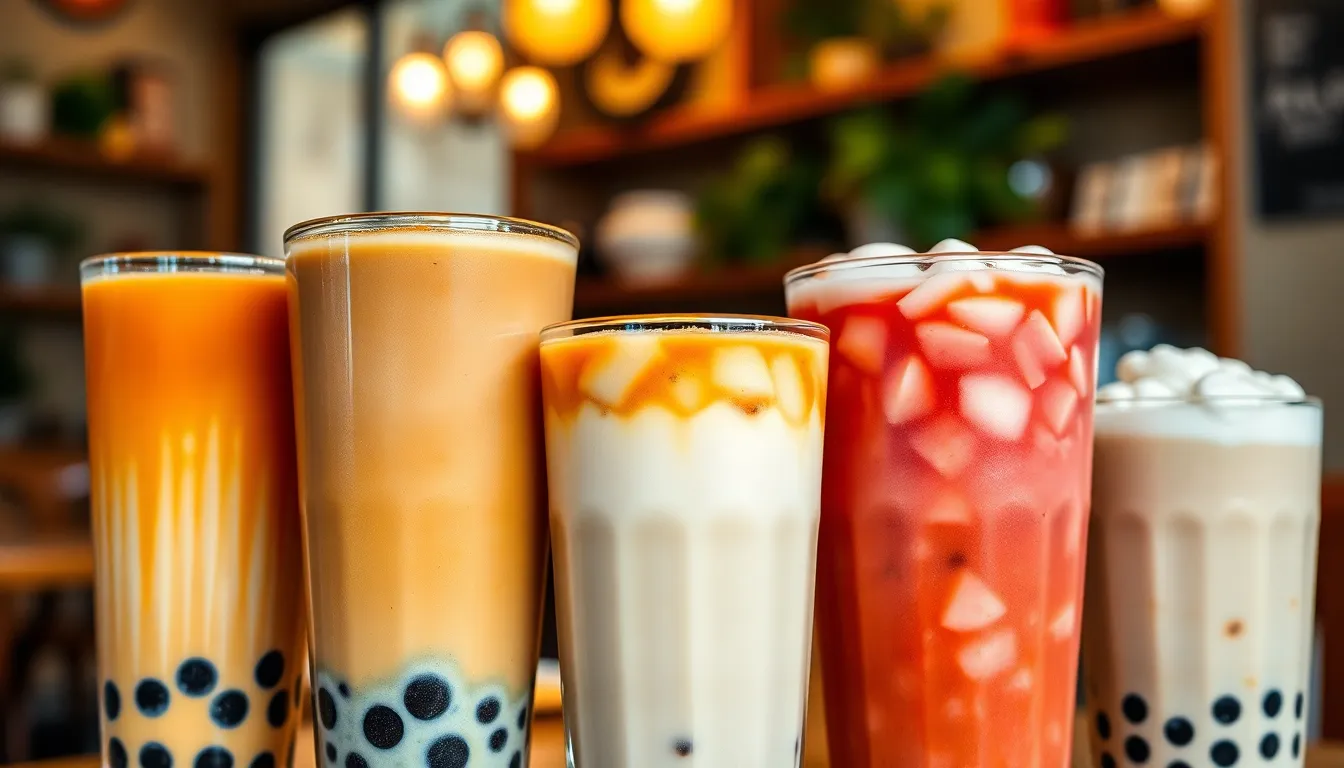
Milk tea combines robust tea flavors with creamy sweetness, creating a rich and smooth beverage that varies significantly across different cultures and preparation styles. Each regional variety offers unique flavor profiles, ingredients, and textures that appeal to different palates.
Hong Kong-Style Milk Tea
Hong Kong-Style milk tea delivers a bold, full-bodied experience characterized by its strong black tea base and creamy richness. Made traditionally with evaporated or condensed milk, this variety balances intense tea flavors with velvety smoothness. The brewing process typically involves straining the tea multiple times through a sackcloth filter, producing a silky texture without sacrificing the tea’s robust character. You’ll notice a slight bitterness and earthiness from the tea, perfectly complemented by the milk’s natural sweetness. This harmonious balance creates the distinctively smooth yet strong profile that has made Hong Kong-style milk tea a beloved staple in cafés throughout Asia.
Taiwanese Bubble Milk Tea
Taiwanese bubble milk tea transforms the traditional beverage into a playful, textural experience with its signature chewy tapioca pearls. Commonly known as boba tea, this variety typically features black or green tea mixed with milk and sweeteners, then topped with those distinctive dark, springy pearls. The flavor profile ranges from earthy to floral, depending on the tea base, with a creamy sweetness that appeals to diverse tastes. Bubble milk tea offers more versatility than other varieties, with countless flavor combinations from classic milk tea to fruit-infused options. The tapioca pearls add a unique dimension, creating an interactive drinking experience as they travel up the wide straw between sips of the creamy, sweet tea.
Thai Milk Tea
Thai milk tea stands out immediately with its vibrant orange color and complex spice profile that awakens the senses. Brewed from strong black tea leaves mixed with aromatic spices like star anise, cardamom, and sometimes tamarind, this variety delivers an unforgettable taste experience. Sweetened condensed milk gives Thai milk tea its signature richness and creamy texture, while also balancing the intensity of the spices. The result creates a distinctive sweet-spicy combination unlike any other milk tea variety. Served either hot or over ice, Thai milk tea offers a refreshing yet indulgent flavor that combines familiar tea notes with unexpected aromatic complexity, making it instantly recognizable among milk tea enthusiasts.
Texture and Mouthfeel of Milk Tea
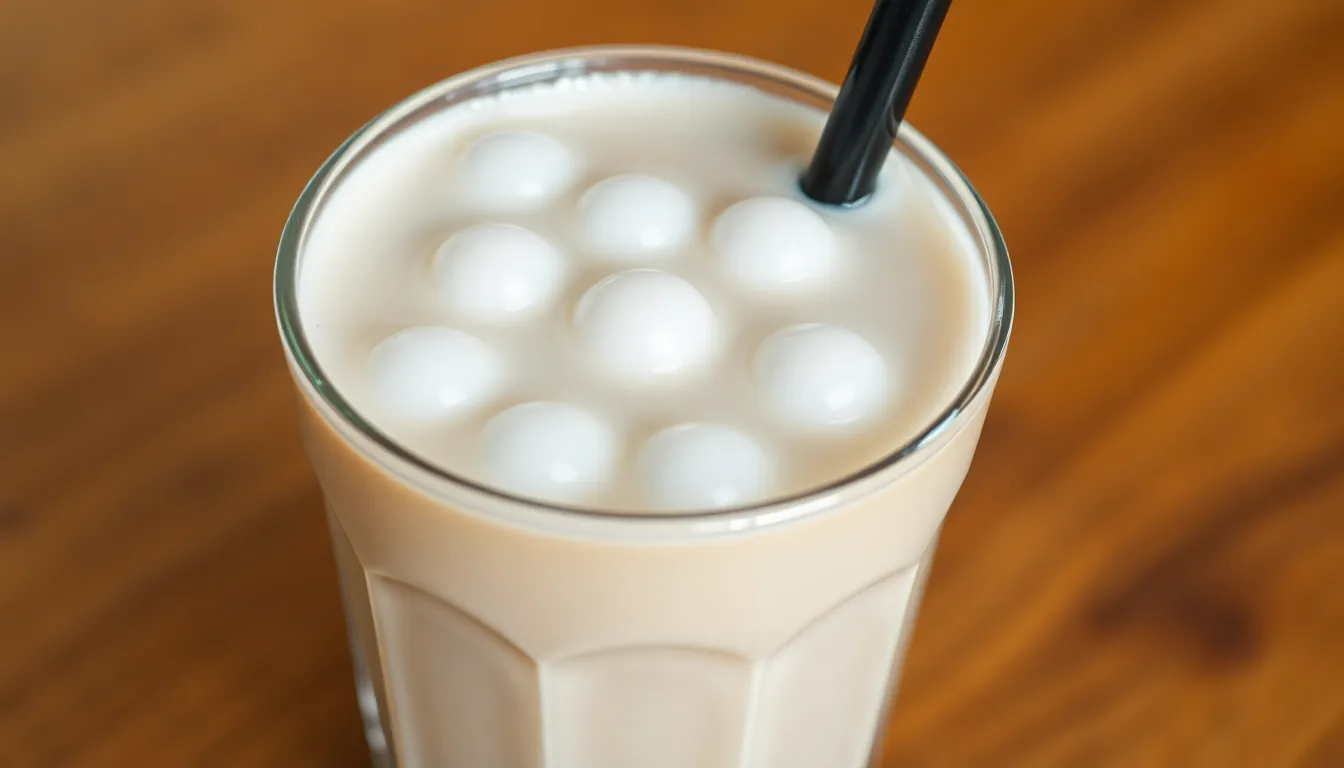
Milk tea delivers a distinctively creamy and smooth mouthfeel that balances the natural astringency found in tea. This velvety texture comes primarily from the milk or milk substitute, creating a rich sensation that coats your palate with each sip. The creaminess transforms what might otherwise be a sharp or tannic tea experience into something more gentle and approachable.
Adding boba (tapioca pearls) to milk tea introduces an exciting textural contrast that’s become iconic in modern milk tea culture. These chewy, mildly sweetened pearls provide a playful element against the smoothness of the drink. When you sip milk tea with boba through a wide straw, you’ll experience both the silky liquid and the satisfying chew of the pearls simultaneously.
Certain varieties of milk tea offer particularly luxurious textures. Taro milk tea, for example, provides an exceptionally rich and comforting mouthfeel that many describe as velvety indulgence. The combination of taro’s natural creaminess with milk creates a texture that feels substantive yet smooth as it flows across your tongue.
The temperature of milk tea also affects its perceived texture. Hot milk tea tends to emphasize the creamy aspects and feels more soothing, while cold milk tea often presents as refreshing with a slightly thicker consistency, especially when prepared with condensed milk or creamers. This textural versatility allows milk tea to satisfy different cravings throughout the year.
Sweet vs. Savory: The Balance in Milk Tea

Milk tea achieves a distinctive flavor equilibrium between sweet and savory elements that makes it uniquely satisfying. The sweetness from sugar, honey, or flavored syrups creates a perfect counterpoint to the earthy, slightly bitter qualities inherent in the tea base. This harmonious contrast delivers a beverage that’s neither overwhelmingly sweet nor too astringent, but rather perfectly balanced for maximum enjoyment.
Tea’s natural savory qualities shine through even when sweetened, providing depth that one-dimensional sugary drinks lack. Black tea varieties contribute robust, full-bodied notes that stand up beautifully against added sweeteners, while oolong tea offers a naturally creamy richness with delicate floral undertones. The milk component further softens any harsh edges of the tea, creating that signature velvety smoothness that bridges the gap between sweet and savory profiles.
Some specialty milk tea variations emphasize their savory side through the addition of spices or herbs, introducing complexity while maintaining enough sweetness to satisfy dessert-like cravings. This versatility allows milk tea to function as both a refreshing everyday beverage and an indulgent treat, depending on how the sweet-savory ratio is calibrated. The resulting flavor spectrum ranges from light and refreshing to rich and indulgent, with countless variations between these extremes.
Comparing Milk Tea to Other Popular Beverages
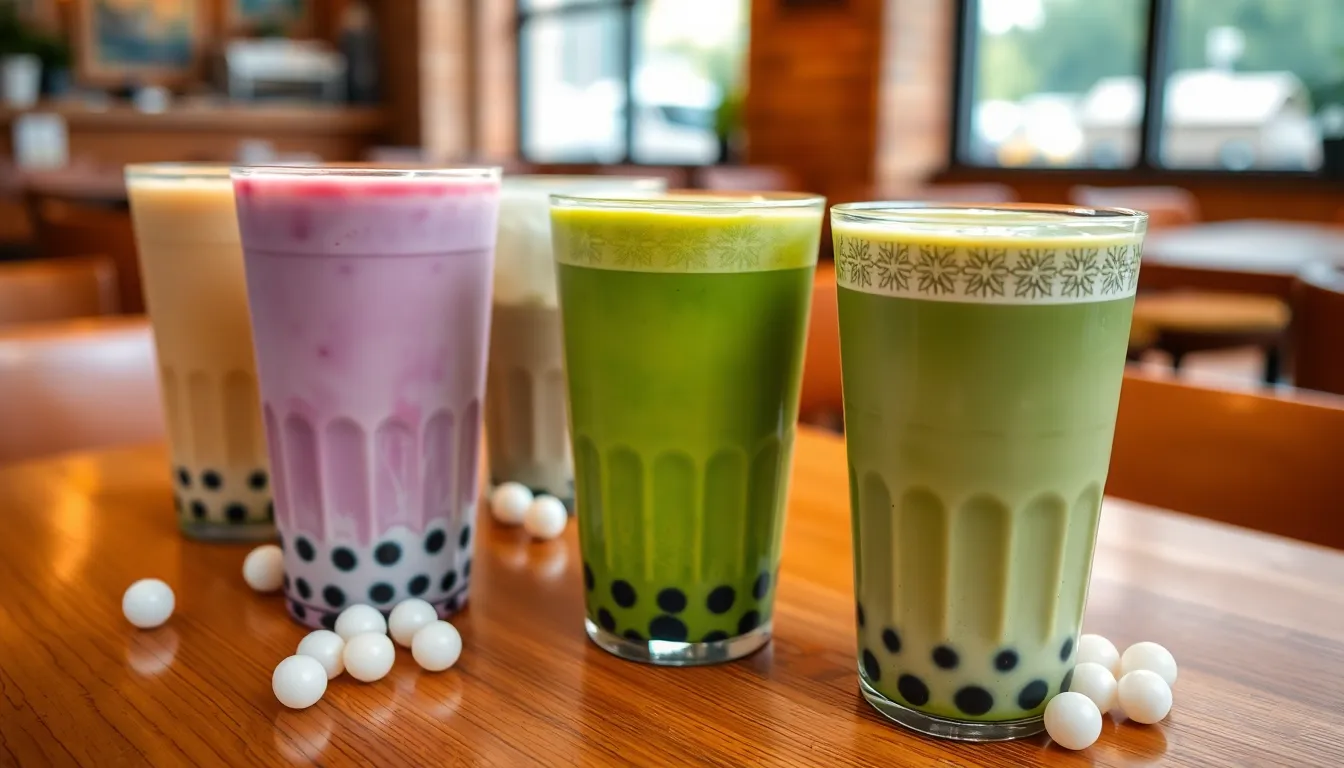
Milk tea stands apart from other beverages with its unique combination of creamy texture and balanced flavor profile. When comparing different milk tea varieties to each other, you’ll notice distinct characteristics that make each one special.
| Beverage | Taste Profile | Texture | Sweetness Level |
|---|---|---|---|
| Milk Tea | Creamy, sweet, with earthy or floral notes | Smooth with optional chewy boba | Generally semi-sweet; customizable |
| Taro Milk Tea | Mildly sweet with subtle earthy and nutty tones; hints of vanilla or coconut | Rich and comforting | Balanced sweetness, not overwhelming |
| Matcha Milk Tea | Earthy and slightly bitter from matcha; creamy from milk | Smooth with chewy boba | Ranges from unsweetened to fully sweetened |
| Bubble Tea (Basic) | Sweet and creamy with distinct tea flavor | Chewy tapioca pearls add texture | Sweetened, with varying levels |
Traditional milk tea offers a harmonious blend of tea’s natural flavors with milk’s creaminess, creating a satisfying baseline experience. Taro milk tea elevates this experience with its distinctive purple color and unique flavor that combines earthiness with subtle nutty notes, giving it a more indulgent quality than standard milk tea varieties.
Matcha milk tea presents a more complex flavor journey, beginning with the characteristic bitterness of high-quality matcha powder before transitioning to a creamy sweetness. Your choice of milk dramatically impacts the final taste, with plant-based alternatives like oat or almond milk creating entirely different flavor profiles than traditional dairy.
Bubble tea introduces an exciting textural element with its chewy tapioca pearls, transforming the drinking experience into something more interactive and playful. Each sip of bubble tea combines the smooth liquid with the satisfying chew of the pearls, creating a multidimensional experience that keeps fans coming back for more.
How to Enhance Your Milk Tea Experience
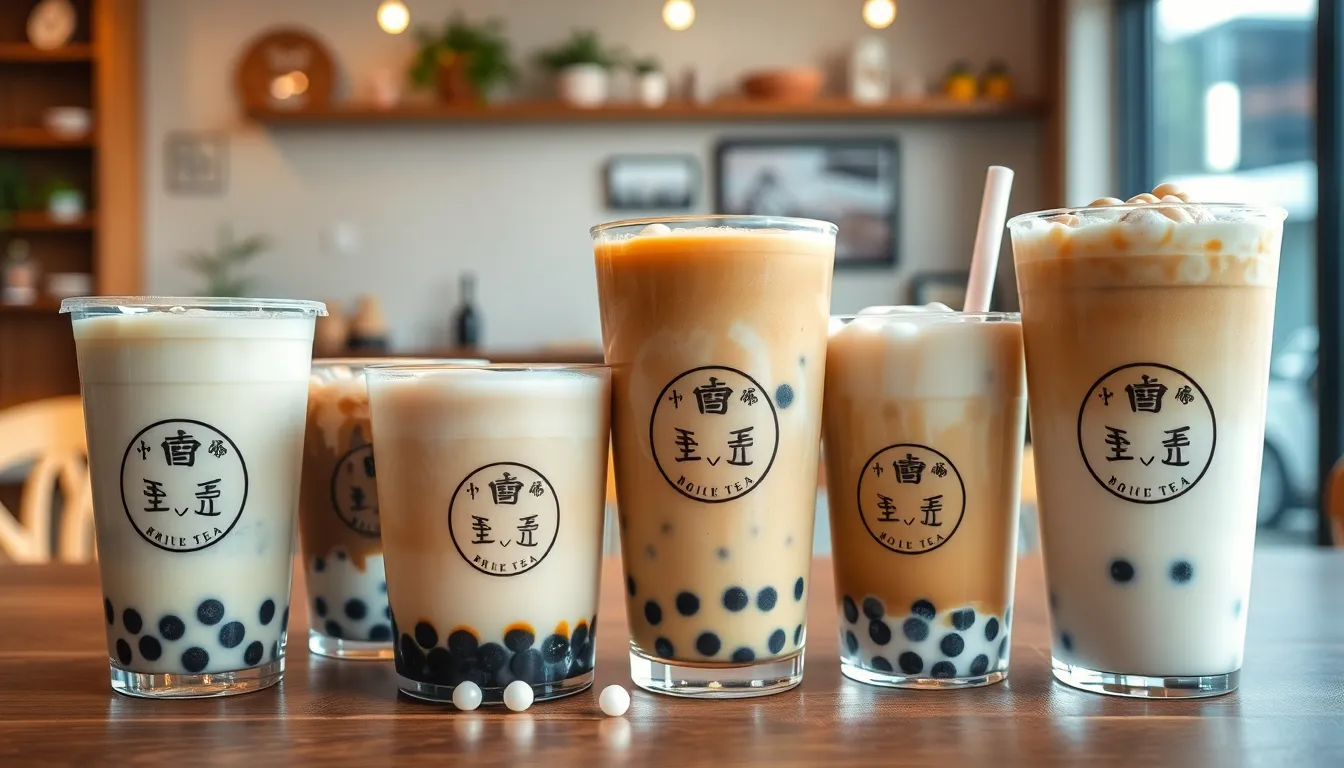
Experimenting with different tea bases transforms your milk tea experience completely. Black tea creates a robust foundation with full-bodied flavor, while green tea offers a lighter, more delicate profile. Oolong tea, naturally creamy on its own, produces an exceptionally rich beverage when combined with milk.
Personalizing your sweetness level makes each cup uniquely yours. Many shops offer customization options ranging from 0% (no sugar) to 100% (full sweetness), letting you control exactly how sweet your drink becomes. Brown sugar, honey, and simple syrup each impart distinct flavor notes that complement different tea varieties.
The milk you choose significantly impacts both flavor and texture. Traditional dairy milk provides classic creaminess, while alternatives like soy, almond, coconut, and oat milk contribute their own unique taste profiles. Coconut milk adds tropical notes, oat milk creates a naturally sweet base, and almond milk offers a lighter alternative with subtle nutty undertones.
Adding tapioca pearls (boba) introduces a delightful textural element to your drink. These chewy black spheres create an interactive drinking experience as they travel up your straw alongside the creamy liquid. Beyond boba, other popular toppings include grass jelly, fruit jellies, and pudding, each adding different textural dimensions.
Temperature preference plays a crucial role in your overall enjoyment. Hot milk tea emphasizes creaminess and comforting qualities, making it perfect for cooler weather. Iced variations provide refreshment with a slightly thicker consistency, ideal for warmer days or as a pick-me-up during busy afternoons.
Conclusion
Milk tea stands as a uniquely versatile beverage that bridges cultures and satisfies diverse palates. Its magic lies in the harmonious balance of robust tea flavors and creamy milk textures creating a drink that’s both comforting and refreshing.
Whether you prefer the bold richness of Hong Kong-style milk tea the playful chewiness of bubble tea or the aromatic spice profile of Thai milk tea there’s a variety waiting for you to discover. The beauty of milk tea is in its customization – adjust your tea base milk type sweetness level and temperature to create your perfect cup.
As you venture into the industry of milk tea remember that each sip offers a delightful journey through flavors and textures that have captivated tea lovers worldwide for generations.
Frequently Asked Questions
What does milk tea taste like?
Milk tea has a balanced flavor that combines the robustness of tea with the creamy sweetness of milk. The taste varies depending on the tea base: black tea provides full-bodied flavor, green tea offers lighter notes, and oolong adds natural creaminess. The milk neutralizes bitterness while adding richness and a velvety texture. Most milk teas feature a harmonious blend of earthy tea notes with smooth, creamy sweetness.
What are the different types of milk tea?
The main types include Hong Kong-style milk tea (strong black tea with creamy richness), Taiwanese bubble milk tea (featuring chewy tapioca pearls with versatile flavor profiles), and Thai milk tea (distinctive orange color with aromatic spices and sweetened condensed milk). Other popular varieties include taro milk tea (mildly sweet, earthy flavor) and matcha milk tea (earthy bitterness balanced by creaminess).
How is milk tea made?
Milk tea is made by combining brewed tea with milk. Traditional recipes often use black tea, though green, oolong, and other varieties are common. The tea is typically brewed stronger than usual to maintain flavor when diluted with milk. The preparation method, tea-to-milk ratio, and milk temperature significantly influence the taste. Sweeteners like sugar, honey, or flavored syrups are often added to enhance flavor.
Is milk tea sweet?
Milk tea typically has a balanced sweetness that counteracts the natural bitterness of tea. The sweetness level varies widely based on personal preference and regional styles. Traditional Hong Kong milk tea tends to be less sweet, while Thai milk tea and bubble tea often feature more pronounced sweetness. Most shops offer customizable sweetness levels ranging from unsweetened to full sugar, allowing you to control how sweet your drink is.
What gives milk tea its creamy texture?
The creamy texture comes primarily from the milk or milk substitutes added to the tea. Whole milk creates a richer mouthfeel, while half and half or condensed milk produces an even more luxurious texture. The temperature also affects texture—hot milk tea emphasizes creaminess while cold milk tea presents a refreshing thickness. For added textural interest, toppings like tapioca pearls provide a satisfying chew that contrasts with the silky liquid.
Can I make milk tea with non-dairy milk?
Absolutely! Milk tea can be made with various non-dairy alternatives like soy, almond, coconut, or oat milk. Each alternative imparts its own unique flavor profile and texture to the drink. Coconut milk adds tropical notes, oat milk provides creaminess closest to dairy, soy milk offers a neutral base, and almond milk contributes a slight nuttiness. These alternatives make milk tea accessible to those with lactose intolerance or following plant-based diets.
What is bubble tea and how is it different from regular milk tea?
Bubble tea (boba tea) is a Taiwanese milk tea variation featuring chewy tapioca pearls at the bottom. Unlike regular milk tea, it provides an interactive drinking experience with both liquid and chewy elements, typically served cold with a wide straw. Bubble tea often incorporates fruit flavors, syrups, and creative toppings beyond tapioca, such as fruit jellies, pudding, or cheese foam, making it more of a dessert-like treat than traditional milk tea.
What’s the best tea base for milk tea?
The best tea base depends on your flavor preferences. Black tea (like Assam or Ceylon) creates a robust foundation with malty notes that stands up well to milk. Green tea offers a lighter, more delicate profile with vegetal undertones. Oolong provides a middle ground with natural creaminess and floral notes. Each base creates a distinctly different milk tea experience, so experimenting with different varieties can help you discover your personal favorite.

